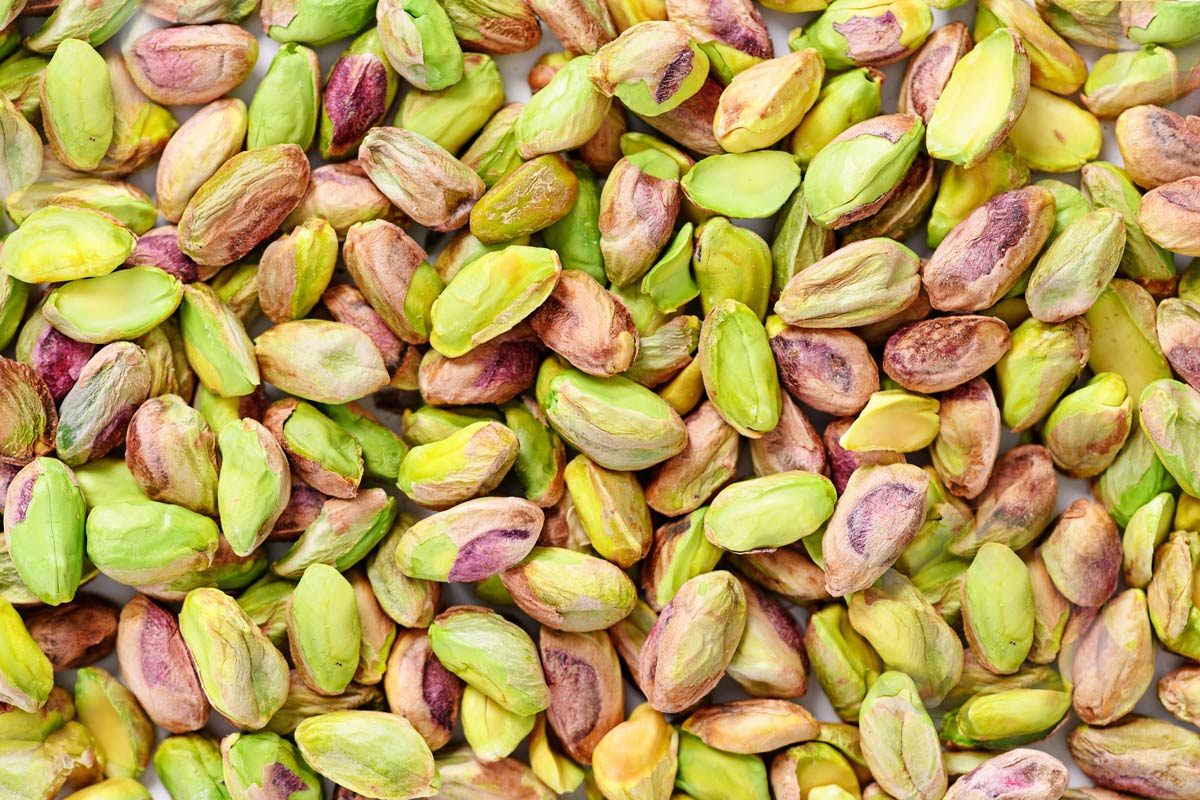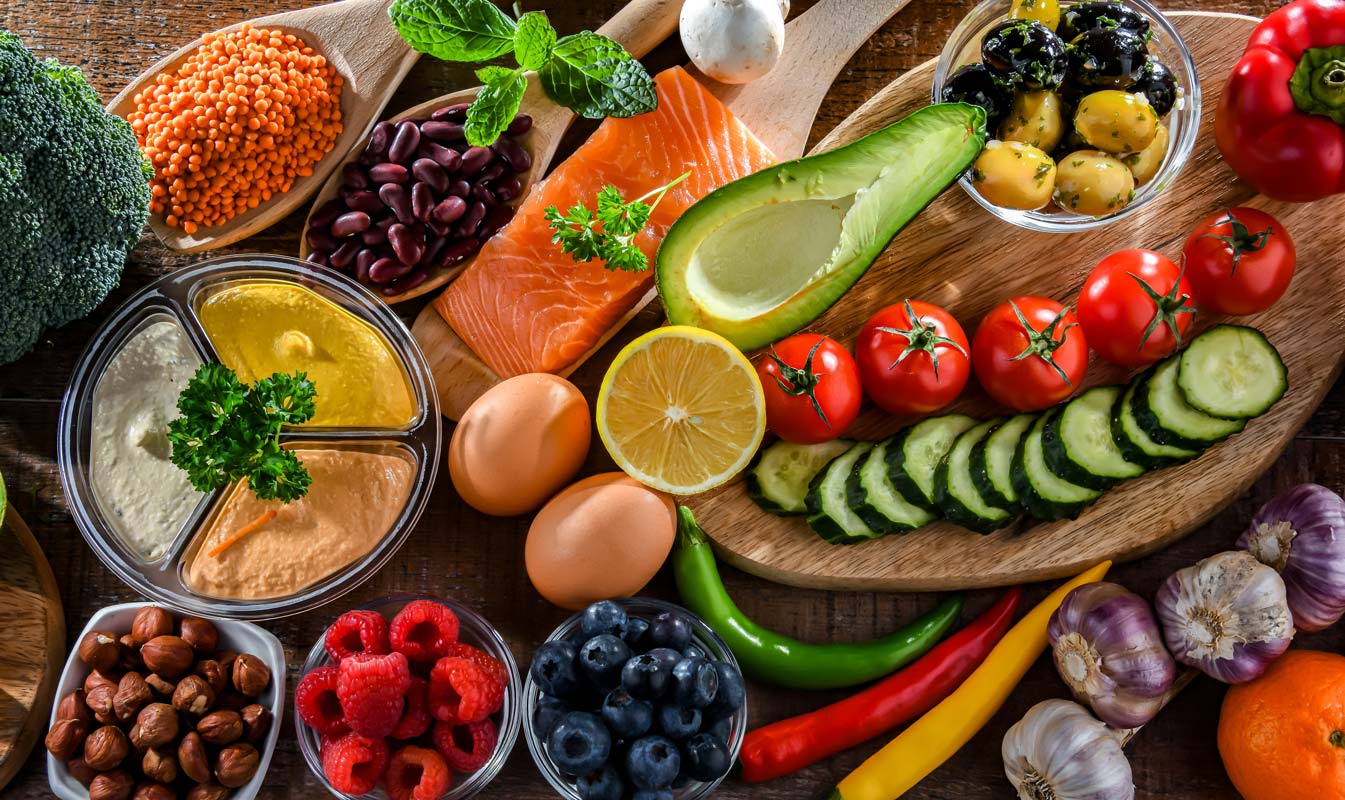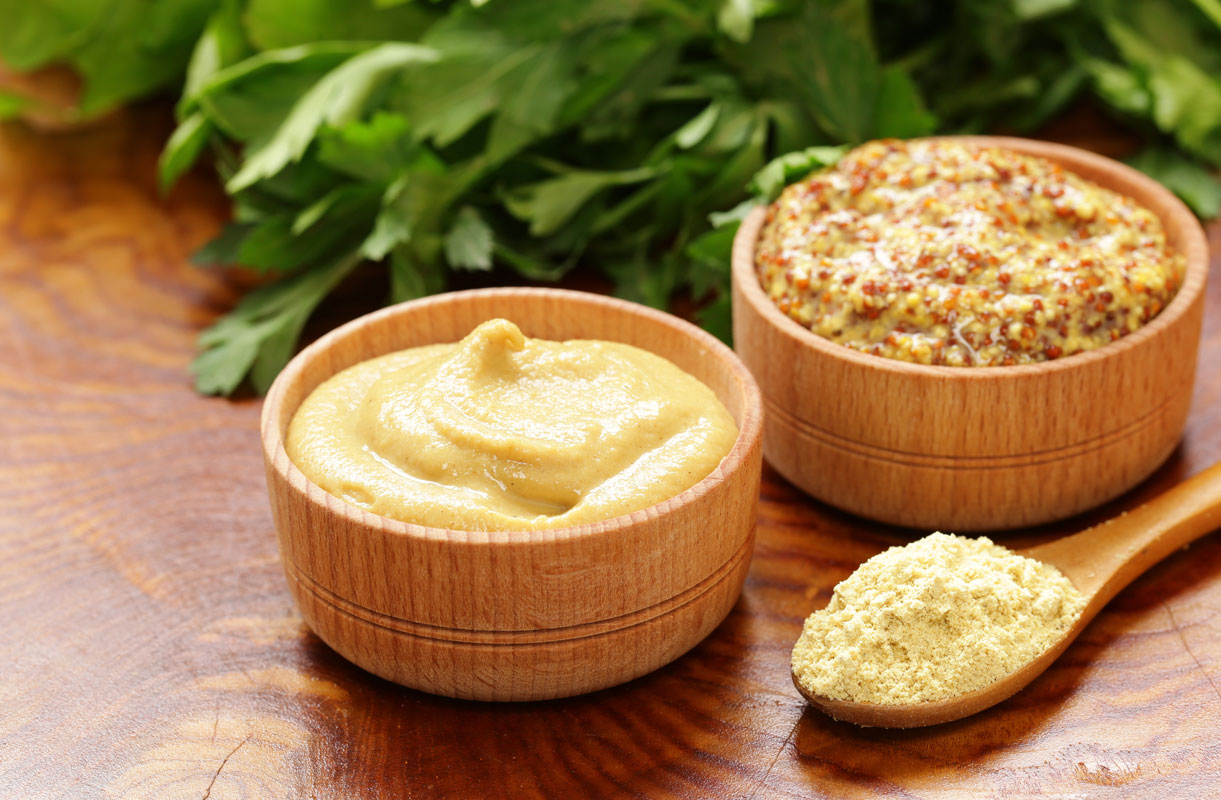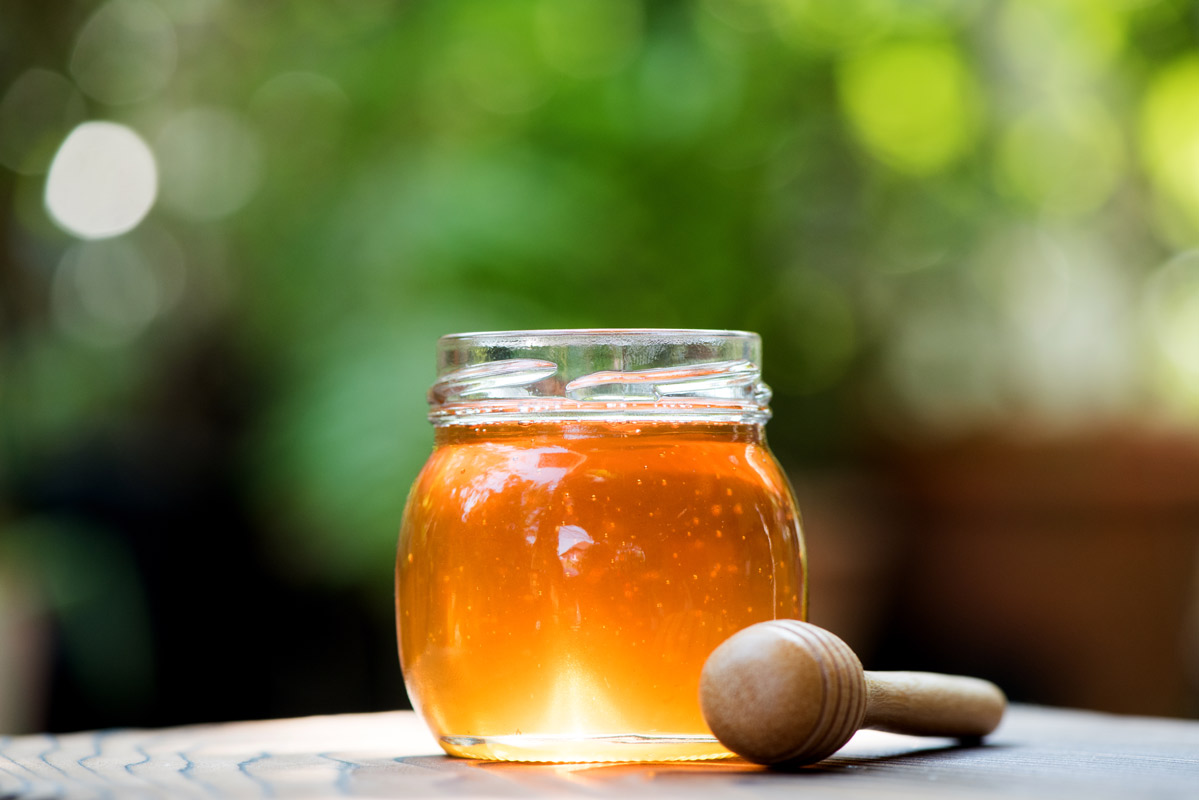Pistachio Cake with White Chocolate Cream Recipe, Spotlight on Pistachios, Grinding Nuts, Protecting the Brain, and New Stroke Prevention Guidelines
Looking for a sweet change from that box of chocolates for Valentine’s Day? My cake combines tender pistachio chiffon layers and a rich but not overly sweet cream filling. It’s a showstopper to cap off any celebration. While most of the attention around February 14 is on the heart, I’m sharing important advice for nurturing your brain to stave off two health threats—dementia and stroke.
Pistachio Cake with White Chocolate Cream
 Pistachio Cake with White Chocolate Cream
Pistachio Cake with White Chocolate CreamPistachio and white chocolate are two luscious ingredients whose unique tastes enhance each other. This cake is not only delicious but can also be up made up to two days in advance. For the white chocolate, choose a brand that’s 35% cacao and in bar or disc form, not chips, which won’t melt smoothly.
Ingredients
For the cake:
- 4 large eggs
- 1 cup cake flour
- 1/2 cup ground unsalted pistachios (see Healthy Ingredient Spotlight and Quick Kitchen Nugget in weekly newsletter)
- 1/2 teaspoon baking powder
- 1 cup sugar, divided use
- 1/2 cup extra virgin olive oil
- 1 teaspoon vanilla
- 1/3 cup room-temperature water
- 1/4 teaspoon fine sea salt
- 1/2 teaspoon cream of tartar
For the filling and garnish:
- 4-1/2 ounces white chocolate
- 1-1/2 cups heavy cream, divided use
- 2 tablespoons confectioners’ sugar
- 2 pints raspberries
- 1/4 cup unsalted pistachios, coarsely chopped
- Optional: edible dried rose petals
Directions
Step 1
Make the cake: Separate the yolks from the whites when the eggs are cold and allow them to come to room temperature.
Step 2
Place one of your oven racks in the center of the oven; preheat to 325°F. Line a 17-by-13-inch rimmed sheet pan with parchment paper (do not grease it).
Step 3
In a small bowl, whisk together the flour, ground pistachios, and baking powder; set aside. In a large bowl or the bowl of a stand mixer fitted with the whisk attachment, beat the egg yolks and a 1/2 cup of the sugar at medium speed until pale, about 2 minutes. Mix in the olive oil, vanilla, and water. On low speed, fold in the flour mixture. If you have only one stand mixer bowl, transfer the batter to another bowl and wash the stand mixer bowl and whisk thoroughly—any fat will prevent the egg whites from whipping.
Step 4
In a separate large bowl or the cleaned bowl of the stand mixer fitted with the whisk attachment, beat the egg whites on medium-low speed until foamy, about 30 seconds. Add the salt, cream of tartar, and remaining 1/2 cup sugar. Slowly increase the speed to high and beat until you achieve a glossy meringue that holds firm peaks, 5 to 8 minutes depending on your mixer.
Step 5
Add a 1/4 of the meringue to the batter and mix thoroughly to incorporate (this will lighten it). Add the remaining meringue in 3 batches, gently folding after each addition until only a few streaks of meringue remain (err on the side of undermixing to keep the batter billowy).
Step 6
Transfer the batter to the sheet pan and smooth out with a large offset spatula; be sure to get into the corners of the pan. Bake for 10 minutes, then rotate the sheet pan in the oven for more even baking. Continue baking until the top is golden brown and springs back when gently pressed, 10 to 15 minutes more.
Step 7
Remove the sheet pan from the oven and slide the cake and parchment paper onto a wire rack to cool. After 10 minutes, invert the cake onto another rack and gently peel off the parchment paper. Let the cake cool completely.
Step 8
Make the filling: Melt the white chocolate and a 1/3 cup heavy cream in the microwave in 1-minute increments at power 4 until just about melted. Use a small spatula to stir until completely smooth; let cool to room temperature.
Step 9
Place the rest of the cream in a large bowl or the clean bowl of the stand mixer fitted with the whisk attachment. Whisk until thick, then with the mixer running on low speed, add the cooled melted white chocolate. Increase the speed and whip until peaks form. Chill in the fridge for 15 minutes for easier spreading.
Step 10
While the cream is chilling, trim the edges of the cake. Sprinkle on the confectioners’ sugar and use your hands or a pastry brush to spread it out. Cut the cake into 3 sections, each about 12 inches long and just over 5 inches wide. Rinse the raspberries and pat them dry. Reserve 20 berries and lightly mash the rest in a bowl.
Step 11
To assemble the cake, place one layer on a rectangular serving plate and spread on 1/3 of the filling, then press in half the mashed berries. Repeat with another layer of cake, another 1/3 of the cream, and the rest of the mashed berries. Top with the final cake layer and spread the rest of the cream on top. Garnish with the whole berries, chopped pistachios, and, if desired, rose petals.
Yields 8 servings

Healthy Ingredient Spotlight
Pistachios
With good amounts of protein, fiber, healthy fats, potassium, B vitamins, and assorted phytochemicals, pistachios are great to include in dishes—from baked goods to salads—and make a smart snack.
For baking, choose unsalted pistachios and, to bring out their flavor without losing their green color, toast for just a few minutes at a low temperature. Preheat your oven to 300°F. Place the shelled pistachios on a rimmed sheet pan and into the oven for about 5 minutes. Once the nuts cool down a bit, rub them between your hands to remove some of the skins. Wait until the nuts reach room temperature to grind or chop them as needed for your recipe.


Quick Kitchen Nugget
Grinding Nuts
As with almonds, ground pistachios are easy to make at home in a nut or coffee bean grinder. I prefer a grinder and working in batches to using a food processor, unless the goal is to achieve more of a nut butter. To keep ground pistachios light and powdery for a cake, add nuts until the grinder is about half full and process in spurts. Stop the machine as soon as you no longer hear any chopping noise. It typically takes about 2 ounces of shelled nuts to yield a 1/2 cup of nut flour.

For Your Best Health
Protecting the Brain
A recent study supported by the National Institutes of Health and published in Neurology®, the medical journal of the American Academy of Neurology, looked at a new potential harm of processed and unprocessed red meat: negative impacts on brain health.
“Red meat is high in saturated fat and has been shown in previous studies to increase the risk of type 2 diabetes and heart disease, which are both linked to reduced brain health,” said study author Dong Wang, MD, ScD, of Brigham and Women’s Hospital in Boston. “Our study found processed red meat may increase the risk of cognitive decline and dementia, but the good news is that it also found that replacing it with healthier alternatives, like nuts, fish, and poultry, may reduce a person’s risk.”
The researchers defined processed red meat as bacon, hot dogs, sausages, salami, bologna, and other processed meat products, and unprocessed red meat as beef, pork, lamb, and hamburger. A serving of red meat is 3 ounces, about the size of a deck of cards.
The first part of the research involved 133,771 people with an average age of 49 who did not have dementia at the start of the study. Participants completed a food diary every 2 to 4 years, listing what they ate and how often, enabling the researchers to calculate how much red meat each person ate on average per day. They were followed up to 43 years. Of this group, 11,173 people developed dementia.
To see the effects of processed red meat, they divided the participants into three groups: The low group ate an average of fewer than 0.10 servings per day (think of this as less than 1 serving a week); the medium group ate between 0.10 and 0.24 servings per day (less than 1 to less than 2 servings a week); and the high group, 0.25 or more servings per day (roughly 2 or more servings a week). After adjusting for age, sex, and other risk factors for cognitive decline, researchers found that participants in the high group had a 13% higher risk of developing dementia compared to those in the low group.
To see the effects of unprocessed red meat, they compared people who ate an average of less than half a serving per day to people who ate 1 or more servings per day; they did not find a difference in dementia risk.
The researchers also looked at both subjective cognitive decline and objective cognitive function. Subjective cognitive decline is when a person reports memory and thinking problems before any decline is large enough to show up on standard tests. Objective cognitive function, which can identify decline, is how well your brain works to remember, think, and solve problems. To evaluate meat’s potential effects on subjective cognitive decline, they looked at a different group of 43,966 participants with an average age of 78 who took surveys rating their own memory and thinking skills twice during the study.
After adjusting for age, sex, and other risk factors for cognitive decline, the researchers found that participants who ate an average of 0.25 or more servings per day of processed red meat had a 14% higher risk of subjective cognitive decline compared to those who ate an average of fewer than 0.10 servings per day. They also found people who ate 1 or more servings of unprocessed red meat per day had a 16% higher risk of subjective cognitive decline compared to people who ate less than a 1/2 serving per day.
To evaluate meat’s potential effects on objective cognitive function, the researchers looked at a third group, 17,458 female participants with an average age of 74 who took memory and thinking tests four times during the study.
After adjusting for risk factors, the researchers found that eating more processed red meat was associated with faster brain aging in global cognition with 1.61 years with each additional serving per day and in verbal memory with 1.69 years with each additional serving per day.
Finally, researchers found that replacing 1 serving per day of processed red meat with 1 serving per day of nuts and legumes was associated with a 19% lower risk of dementia and 1.37 fewer years of cognitive aging. Making the same substitution for fish was associated with a 28% lower risk of dementia and replacing with chicken was associated with a 16% lower risk.
“Reducing how much red meat a person eats and replacing it with other protein sources and plant-based options could be included in dietary guidelines to promote cognitive health,” said Dr. Wang.
A limitation of the study was that it primarily looked at white health care professionals, so the results might not be the same for other race, ethnic, and non-binary sex and gender populations. “More research is needed to assess our findings in more diverse groups,” he concluded.

Fitness Flash
New Stroke Prevention Guidelines
Each year, over half a million Americans have a first stroke. According to the American Stroke Association, a division of the American Heart Association, up to 80% of strokes may be preventable. Its “2024 Guideline for the Primary Prevention of Stroke” outlines steps that people and their doctors can take to protect against this devastating brain event, including screening people for stroke risk factors and increasing the public’s awareness and knowledge about healthy lifestyle changes to reduce the risk.
“The most effective way to reduce the occurrence of a stroke and stroke-related death is to prevent the first stroke—referred to as primary prevention,” said the guideline writing group chair, Cheryl D. Bushnell, MD, MHS, FAHA, professor and vice chair of research in the Department of Neurology at Wake Forest University School of Medicine in Winston-Salem, NC. “Some populations have an elevated risk of stroke, whether it be due to genetics, lifestyle, biological factors, and/or social determinants of health, and in some cases, people do not receive appropriate screening to identify their risk.”
The guideline replaces the 2014 version and provides evidence-based recommendations for strategies to support brain health and prevent stroke throughout a person’s life. “This guideline is important because new discoveries have been made since the last update 10 years ago. Understanding which people are at increased risk of a first stroke and providing support to preserve heart and brain health can help prevent a first stroke,” said Dr. Bushnell.
Modifiable risk factors for stroke, such as high blood pressure, overweight and obesity, elevated cholesterol, and elevated blood sugar, can be identified with physical exams and blood tests. These conditions, the guideline states, should be addressed with healthy lifestyle and behavioral changes and may include medications. A new recommendation is to consider GLP-1 receptor agonist medications, which are FDA-approved to reduce the risk of cardiovascular disease in people who are overweight or obese and/or have type 2 diabetes.

The most common lifestyle behaviors that can help reduce stroke risk include healthy nutrition, regular physical activity, avoiding tobacco, getting healthy sleep, being at a healthy weight, controlling cholesterol, and managing blood pressure and blood sugar. The guideline recommends that adults with no prior cardiovascular disease, as well as those with increased risk, follow a Mediterranean dietary plan. Mediterranean dietary programs have been shown to reduce the risk of stroke, especially when nuts and olive oil are eaten.
The guideline also includes some new specific recommendations for women. Health professionals should screen for conditions that can increase a woman’s risk of stroke, including use of oral contraceptives, high blood pressure during pregnancy, other pregnancy complications such as premature birth, endometriosis, premature ovarian failure, and early onset menopause. For instance, treating elevated blood pressure during pregnancy and within six weeks of delivery is recommended to reduce the risk of maternal intracerebral hemorrhage.
“Most strategies that we recommend for preventing stroke will also help reduce the risk of dementia, another serious health condition related to vascular issues in the brain,” said Dr. Bushnell.
According to the American Stroke Association, it’s also important to remember the warning signs of stroke with the acronym FAST: Face drooping, Arm weakness, Speech difficulty, Time to call 911.
Get More Recipes In Your Inbox!








